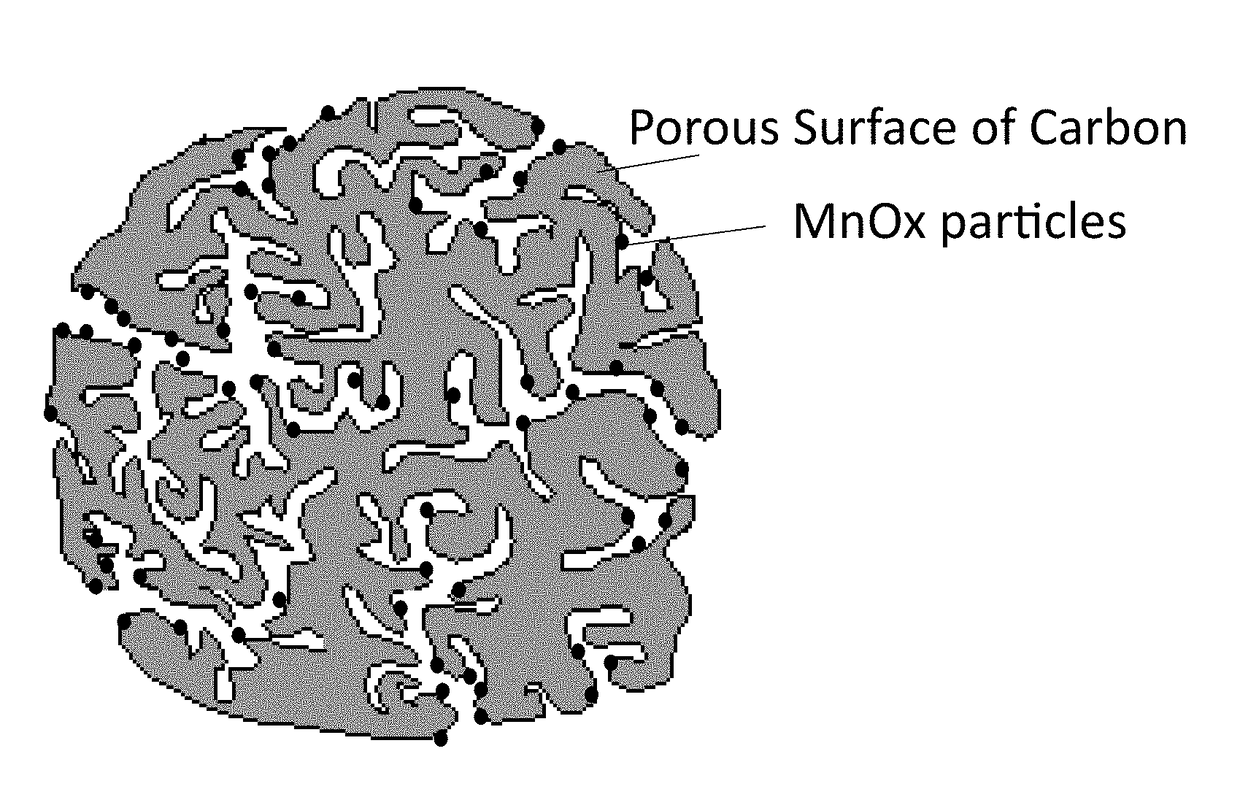Surface-Modified Carbon and Sorbents for Improved Efficiency in Removal of Gaseous Contaminants
- Summary
- Abstract
- Description
- Claims
- Application Information
AI Technical Summary
Benefits of technology
Problems solved by technology
Method used
Image
Examples
Embodiment Construction
[0027]U.S. Provisional Application No. 62 / 416,899 filed Nov. 3, 2016; U.S. Provisional Application No. 62 / 463,144 filed Feb. 24, 2017; and U.S. Provisional Application No. 62 / 422,943 filed Nov. 16, 2016 are incorporated into this application by reference.
[0028]Activated carbon in any particle size distribution from as coarse as 4 mm to as fine as 10 micron may be treated, such as by being impregnated, with manganese oxide (MnOx) and such complexes prepared as their finely dispersed nano particles. The nanoparticles of MnOx are preferably in the range of 100-400 nanometers.
[0029]These nano particles are commercially available and may be applied to the activated carbon or other substrate. Alternatively, the particles may be formed in situ by chemical / reducing agents with their precursors, such as potassium / sodium permanganate, manganese acetate, manganese oxalate and / or manganese sulfate and others known by the person of ordinary skill. One may blend this MnOx impregnated carbon with ...
PUM
| Property | Measurement | Unit |
|---|---|---|
| Percent by mass | aaaaa | aaaaa |
| Percent by mass | aaaaa | aaaaa |
| Percent by mass | aaaaa | aaaaa |
Abstract
Description
Claims
Application Information
 Login to View More
Login to View More - R&D
- Intellectual Property
- Life Sciences
- Materials
- Tech Scout
- Unparalleled Data Quality
- Higher Quality Content
- 60% Fewer Hallucinations
Browse by: Latest US Patents, China's latest patents, Technical Efficacy Thesaurus, Application Domain, Technology Topic, Popular Technical Reports.
© 2025 PatSnap. All rights reserved.Legal|Privacy policy|Modern Slavery Act Transparency Statement|Sitemap|About US| Contact US: help@patsnap.com



